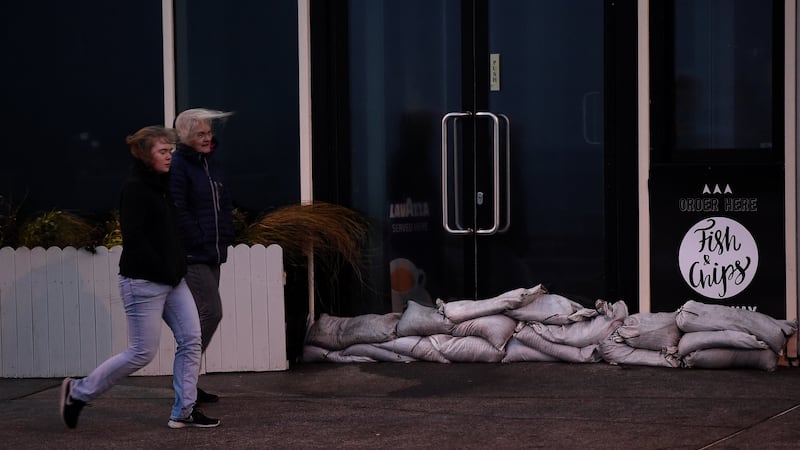How well prepared are we for extreme weather events like Ophelia?
Past meteorological events have brought hard lessons after testing the State’s ability to respond adequately to extreme weather events.
They have come in the form of storms – no longer largely confined to winter – sustained flooding after long periods of rainfall and even heavy snowfall.

Backed by the protocols of National Emergency Plan, however, the effectiveness of the National Emergency Co-ordination Group, which implements the State response, has improved significantly.
Likewise, the quality of weather forecasting has become more reliable. The application of a series of forecasting models deployed by the US National Hurricane Center and Met Éireann predicted Ophelia’s path very accurately.
An early warning system for extreme flooding is, however, still in development. Major cities located at estuaries and other areas that experience frequent flooding remain vulnerable.
Better preparedness for extreme weather, nonetheless, is beginning to emerge - notably in co-ordination between emergency services, health services, utility providers such as the ESB and Irish Water, Government departments and State bodies.
Improved use of technology, better communications and effective use of social media have all helped enhance the flow of critical information to the public – though the vagaries of weather and their impacts are notoriously difficult to plan for.
Extreme weather events seem to be more frequent - is there any basis for this?
The year 2014 was a very bad one for storms, and research is now revealing why and how Europe may be vulnerable to such “explosive” and sustained weather events.
There is early evidence that hurricane-force storms like Ophelia will reach Ireland more often from the east coast of America. Research also indicates hurricanes will become intense in the future due rising sea temperatures.
“It is the rise in temperatures over most of the Atlantic that is a primary driver of this; a clear signature of human-induced climate change,” explained Dr Dann Mitchell of University of Bristol.
For every degree the globe warms, the atmosphere can hold 7 per cent more water vapour. The inevitable consequence is more rainfall. Based on an increase of 1.6 degrees by 2050, the frequency of extreme Irish rainfall events in winter and autumn is projected to increase by 30 per cent, Met Éireann’s head of research Dr Saji Varghese told the Citizens’ Assembly recently.
What response is necessary to prepare for more frequent extreme events?
In preparing for climate change, mitigation (decarbonising by reducing CO2 emissions) and “adaptation” are of critical importance, ie taking the right decisions on infrastructure to counter the effects of a warming world.
The Government is due to publish a “national adaptation plan” to set out what measures it will take to address climate change impacts, especially relating to infrastructure, planning and flood relief. A draft version sets out likely scenarios and costs as climate change impacts more on every sector.
There are particular difficulties with older infrastructure that is not engineered for extreme climate events. Flood defences are inadequate and will require scaling-up and sustained funding over coming decades if we are to have what Prof Peter Thorne of Maynooth University has described as “climate-smart infrastructure fit for 50 to 100 years’ time”.
That could mean bringing flood defence walls up by a metre, reinforcing or raising bridges and moving roads so they are less likely to get flooded.
The EPA has also highlighted the critical role of local authorities in reducing vulnerabilities.
Simply cleaning up after flood and storm events is no longer enough. We must now plan to adapt our economy, society and environment to deal with the reality of climate change, and to manage the risks it poses to our way of life, livelihoods and wellbeing.











